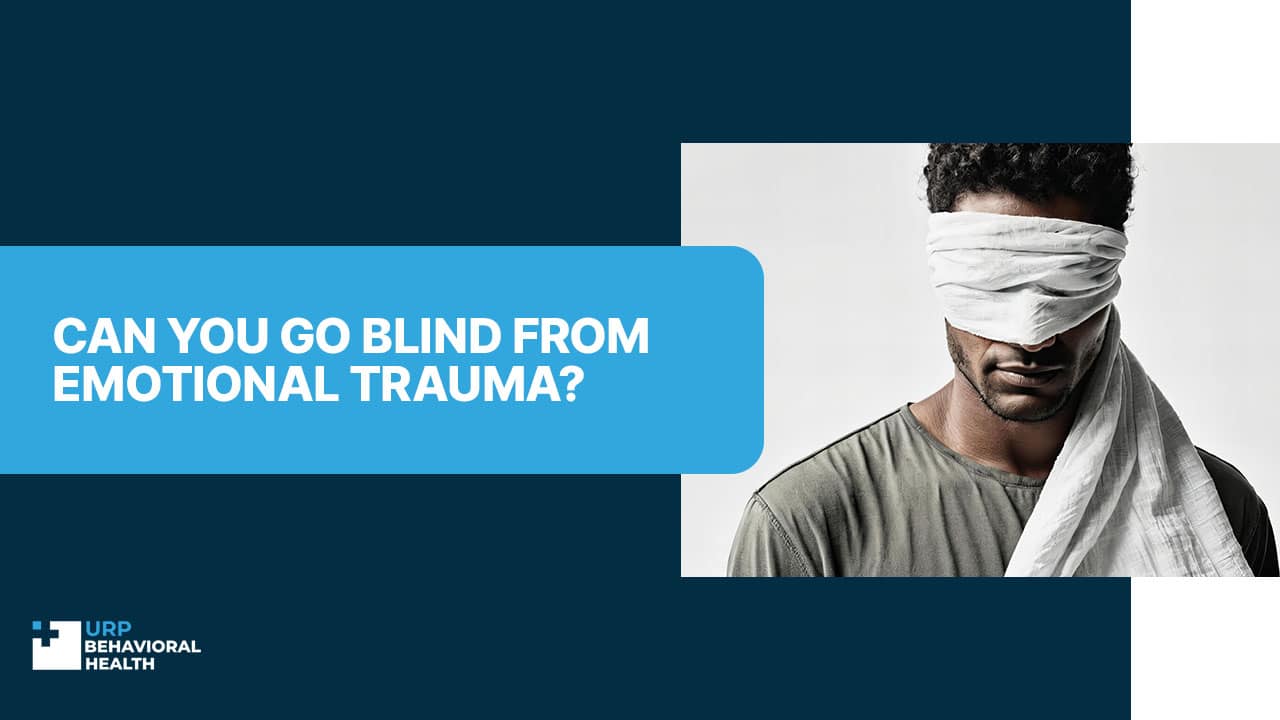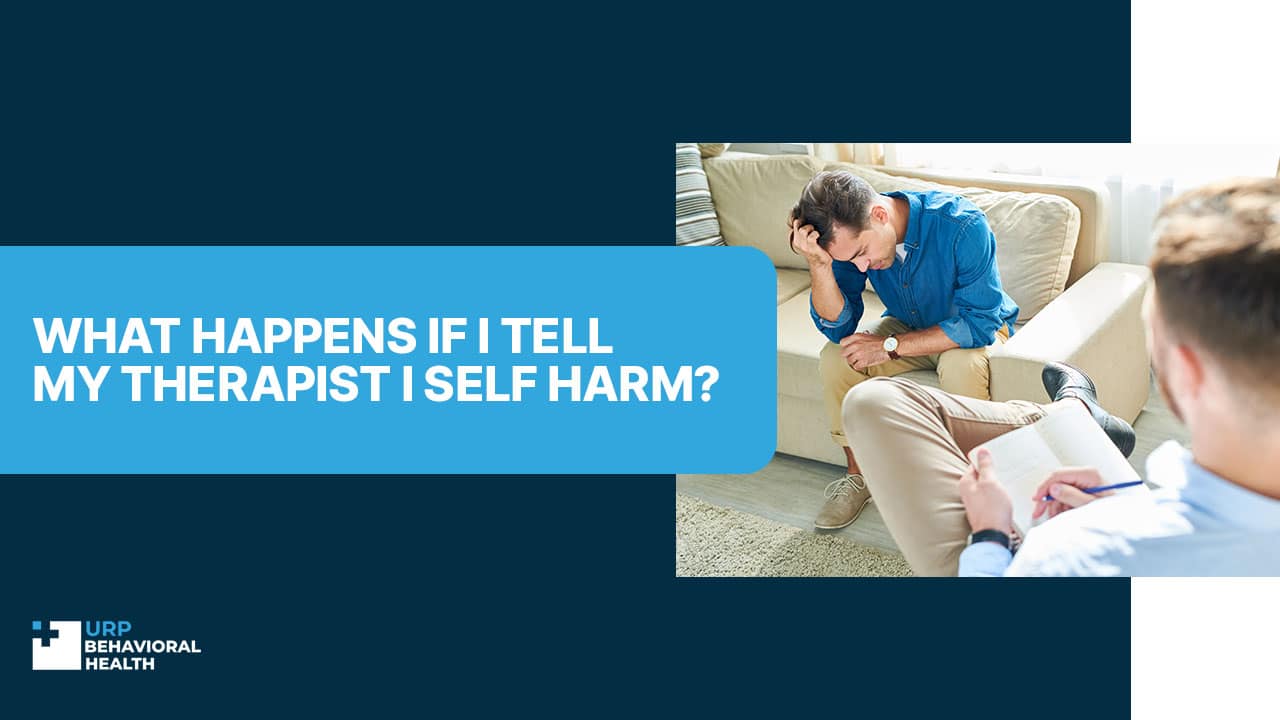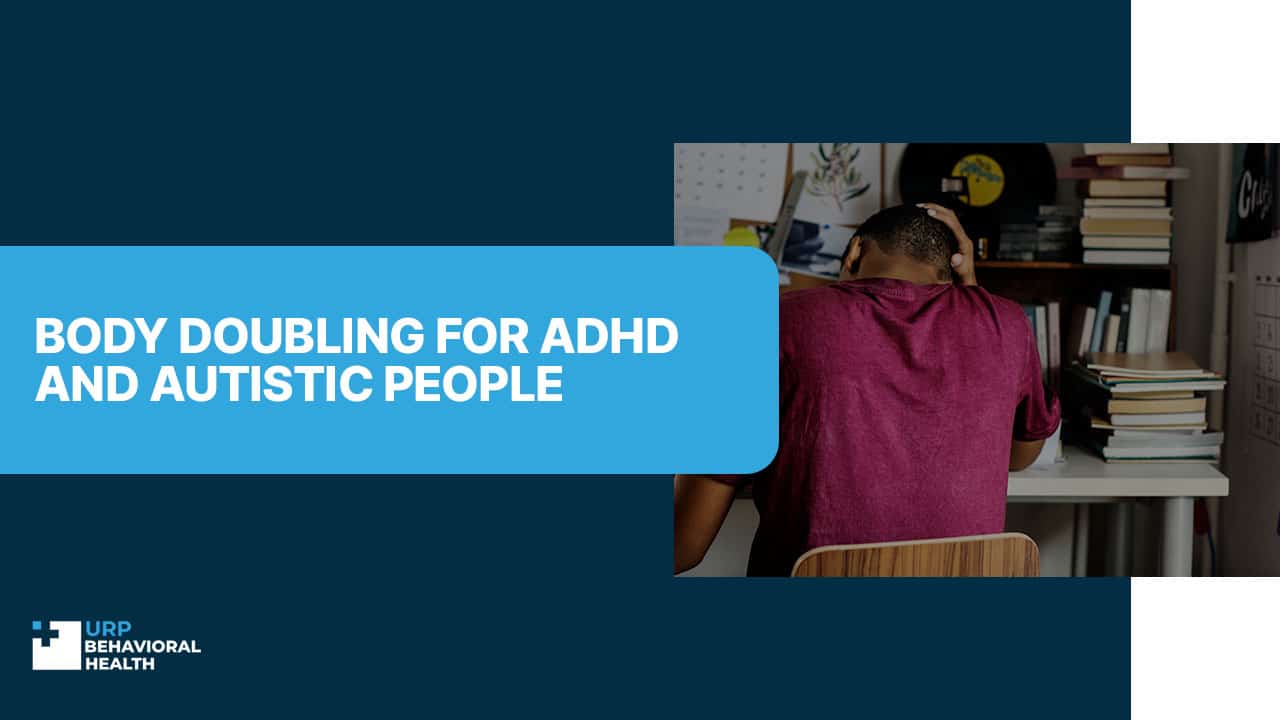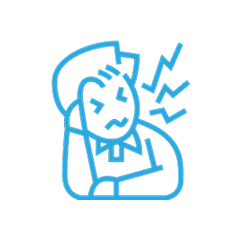
How to Help Someone Who is Dissociating
Although conditions like dissociative identity disorder affect as few as 1.5 percent of the global population, dissociative episodes are not uncommon. Some studies show that mild episodes of depersonalization or derealization can last from hours to days. They can occur as a reaction to high amounts of stress.
According to one study, episodes can occur due to shifts in your circadian rhythm or drug use. But even though brief episodes can occur without meeting the criteria for a disorder, it doesn’t make the experience any less stressful. This is especially true when a loved one struggles with symptoms of depersonalization or derealization. To make sure you’re well-equipped to help someone cope with a dissociative episode or disorder, it helps to educate yourself about the problem. Let’s discuss concepts like dissociation and dissociative disorders and how to help someone if they struggle with this problem.
What Does Dissociating Mean?
Dissociation refers to a mental process wherein you disconnect from your memories, feelings, and sense of identity. It often occurs in response to a highly traumatic or distressing event and is a way for the body to protect the mind from the effects of such an incident. When you go through a traumatic event, you’ll experience some extent of dissociation during the event or in the days and weeks that follow.
Maybe the memory of the event seems as if it didn’t really happen. Or, you feel disconnected from what’s happening around you, as though you’re watching everything from behind a glass. Usually, symptoms of dissociation clear up on their own without the need for intervention. In other cases, however, you or a loved one may develop a disorder that requires professional treatment.
Signs That Someone Is Dissociating
When someone is dissociating, they may show certain signs or behaviors, such as:
- Spearing spaced out and unfocused on the activity at hand
- Speaking in a monotone voice and not showing any emotion
- Showing a lack of sensation, i.e., non-responsiveness when you touch them
- Having a blank face and appearing as though they’re staring
- Being unable to remember important information about their life
- Forgetting how to do something that they could do easily
- Having items that they don’t remember buying, taking, or owning
Moreover, it’s likely that the person will have no recollection of what they were doing during their dissociative episode.
Contact our admissions team now to begin your path toward a brighter future.
People who experience depersonalization or derealization describe the symptoms as:
- Feeling disconnected from your body or the world around you, you may feel as though you’re seeing the world from behind a glass or just observing your emotions
- Feeling like the world around you isn’t real
- Forgetting important information or having gaps in your memory that aren’t linked to medical problems or injuries
- Struggling to concentrate or deal with intense emotions
Sometimes, people may also have behavioral symptoms, such as acting in a way that they wouldn’t normally behave. When asked, a person struggling with dissociation may find it difficult to define their thoughts, opinions, and tastes.
Different Dissociation Disorders
According to the American Psychiatric Association, this is a group of disorders classified in the DSM as one involving issues of memory, perception, and behavior. The dissociative symptoms you experience can take a toll on different areas of mental functioning. Some examples of dissociative symptoms include feeling detached and as though you’re outside your body. Meanwhile, other people may experience amnesia, commonly known as loss of memory.
As of yet, the DSM lists three main dissociative disorders. They are as follows:
Depersonalization-Derealization Disorder
When you or a loved one has depersonalization or derealization disorder, you have recurrent episodes or an ongoing experience of one or both conditions.
- During depersonalization, you have experiences of unreality and feel detached from your mind or body. It may feel as though you’re outside your body and watching the events that happen to you.
- In derealization, you feel as though your surroundings are distorted or unreal, causing you to feel detached from the environment. The things and people around you may seem unreal.
During periods of depersonalization and/or derealization, you’re aware of reality and that what’s happening to you is unusual. It can be a distressing experience, even if you don’t react to it or show emotion.
Occasional episodes of depersonalization or derealization aren’t an indication that something’s wrong. However, when episodes occur frequently, you may worry about ‘going crazy,’ causing you to focus heavily on what is and isn’t real. This makes it difficult for you to function in important areas of your life, such as at work or school, increasing the risk of developing a disorder.
Dissociative Amnesia
This refers to a dissociative disorder in which you’re unable to recall important information. Typically, such information isn’t lost due to normal forgetting, and the disorder occurs as a result of traumatic or distressing events. People with this condition have retrospectively reported gaps in their memory. Usually, these gaps refer to personal information of a stressful nature.
According to experts, this condition most commonly occurs in combination with other psychiatric conditions, such as personality disorders. The different types of amnesia include:
- Localized amnesia is the most common type, and it’s when you’re unable to recall a specific event or period of your life.
- Selective amnesia is when you can’t remember certain events within a general period or certain aspects of an event.
- Generalized amnesia is rare, and it refers to a complete loss of identity and life history.
According to the APA, the disorder is associated with experiences of childhood trauma, such as emotional abuse and neglect. Some people may be unaware of their memory loss, or they may dismiss or discount the significance of not remembering a particular event.
Dissociative Identity Disorder
Previously referred to as multiple personality disorder, DID is linked to traumatic life events, abuse, and overwhelming experiences. To have a formal diagnosis of DID, you must show symptoms such as:
- Having two or more distinct personality states. These identities are accompanied by changes in how you think, behave, and remember events and are observed by people around you.
- Having gaps in your memory causes you to forget about past trauma, personal information, or everyday events.
- Experiencing significant stress and difficulties in occupational, social, and other areas of functioning.
The personal preferences and attitudes of a person with DID may change suddenly before shifting back to their original state. These shifts occur involuntarily and without warning, causing immense distress to the person experiencing them.
What Causes Dissociation
Researchers agree that the main risk factor for dissociative disorders is chronic trauma during childhood. Common examples of trauma include repeated instances of physical or sexual abuse, neglect, or emotional abuse.
When exposed to frightening or unpredictable family environments, children may disconnect from reality. As they grow up, children may continue dissociating as a way to cope with stressful situations. It’s also possible to develop a dissociative disorder due to traumatic events that happen during adulthood. This can include going through a natural disaster, war, or torture.
PTSD and Dissociation
When you’re exposed to a highly stressful or traumatic event, you risk developing acute stress disorder or posttraumatic stress disorder. Both conditions can involve dissociative symptoms such as depersonalization/derealization or amnesia. People with PTSD may rely on dissociation as a defense mechanism to protect their minds from memories or reminders of a traumatic event.
Helping Someone With Dissociation
When someone you know has a tendency to dissociate, it could be indicative of a deeper problem. It’s also a very stressful experience, so there are a few things you can do to help them cope with the situation.
Know When Dissociation Will Occur
Start by educating yourself about dissociation and when it’s most likely to occur. The mind dissociates as a way to protect itself from memories of former trauma. Even if the event took place years ago, a friend or family member may continue responding to stressful cues through dissociation. These triggers can be anything, including sights, smells, sounds, or even a certain texture or bodily sensation.
Unfortunately, it can be difficult to help a loved one when there are many different types of triggers. It’s best to consult a mental health practitioner to narrow down specific triggers that your friend or family member is experiencing. Once you know which stimuli can cause them to dissociate, you can work on other protective measures, even if you can’t block out the trigger entirely.
Know What Signs To Look For
Although triggers that remind you of a traumatic event are highly likely to cause dissociation, you should also know what signs to look for. If you’re worried that a loved one may be dissociating, you can look for the following signs to make sure:
- Are they having rapid mood swings?
- Do they have difficulty remembering personal information?
- Do they seem depressed and/or anxious?
- Are they staring into space?
- Are they showing little to no emotion or speaking in a monotonous voice?
If you notice these signs, it’s likely that your loved one is dissociating and needs some help getting in touch with reality.
Ask What They Need
While it may feel like the best thing to do is to provide a loved one with space or nurturing, it may not be what they need in the present moment. It’s best to ask them whether they’d like some space or for you to stay with them and comfort them. At the same time, try not to ask too many questions and be a reliable presence. This helps them cope without the added stress of others not knowing what they need.
Move Them Someplace Safe and Quiet
For some people, loud noises and crowded spaces can be a trigger for dissociation. If that’s the case, take them to a safe and quiet space. Make sure that they’re not engaging in any activities that could be dangerous, like cooking over an open flame or driving a car. If you’re outdoors and it’s too loud, it’s preferable to take them inside so they feel safer.
Take Them Outdoors
For some people, being in an enclosed space, i.e., indoors, can be triggering, causing them to dissociate when exposed to stress. If that’s the case, taking them outside can help them get some air and provide opportunities to stay grounded in the present moment. That being said, you want to make sure that it’s peaceful and quiet outside so that they’re not exposed to further triggers.
Don’t Become a Trigger
When your loved one is dissociating, even well-intentioned actions like touching or hugging can seem intrusive and uncomfortable. In some cases, it can end up becoming a trigger as well. The same goes for speaking loudly as a way to help them stop dissociating.
If you think it’s appropriate, ask them if it’s alright to give them a hug, pat them on the back, or hold their hand. For some people, the pressure of a hug or warmth from someone else’s hand can gradually help them come back to reality. But for others, it can be triggering, so try asking them how they feel about it first.
Our team will verify your insurance and design a plan tailored to your needs.
Encourage Them To Breathe
When you’re exposed to a threat or even a memory or symbol of past trauma, it can trigger your body’s stress response. Studies have found a link between the body’s fight-or-flight response and dissociation. Unfortunately, any anxious feelings during dissociation can continue stimulating your stress response, which is controlled by the sympathetic nervous system.
An effective way to help a loved one calm down is to practice self-soothing techniques, like deep breathing. These include strategies like box breathing, also referred to as square breathing. It’s a technique meant to slow down your breathing by distracting your mind as you count to four. This helps stimulate your parasympathetic nervous system, which is responsible for reducing your stress levels. Here’s how it works:
- Slowly count to four as you inhale
- Slowly count to four as you hold your breath
- Slowly count to four as you exhale
- Slowly count to four before inhaling again and repeating the cycle
Another technique is the 4-7-8 technique, which also requires you to breathe in for four seconds. The difference is that you hold your breath for 7 seconds and exhale while counting to 8.
Implement Grounding Techniques
A major aspect of dissociation is that you disconnect from reality. Therefore, it’s recommended to help your loved one practice grounding techniques as a way to cope with dissociative symptoms. Grounding is a way to help you ‘get out of your head’ and come back to the physical world. Similarly, it allows you to reorient yourself and connect with the present moment.
A few grounding techniques that you can use to engage their senses include:
- The 5-4-3-2-1 technique. Ask them to name five things they can see, four things they can touch, three things they can hear, two things they can smell, and one thing they can taste.
- Ask them to squeeze ice cubes or put their hands in cold water.
- Giving them something spicy or sour to eat.
- Get them to walk barefoot on the ground and ask them to describe how it feels on the soles of their feet.
Other ways to help loved ones ground themselves, in reality, include taking them to a quiet place for a walk or encouraging them to stretch and move their body. You can have them perform mental tasks like making lists in categories such as colors or bird species.
Give Them Small Tasks To Do
Another way to bring a loved one back to the present moment is to give them small tasks to complete. Make sure they’re simple, like wiping down the dinner table or doing the dishes. This helps them interact with their surroundings and brings back their connection with reality.
Treatment Approaches For Dissociative Disorders
Though there are different techniques you can try to help friends or family members deal with dissociation, it’s preferable to consult a professional. This is especially important if your loved one experiences frequent bouts of dissociation that affect their quality of life and ability to function in different situations.
Undergoing treatment for dissociation is a long-term solution that can improve functioning and help them cope with stressful events in a healthier way. Some of the most common treatment options include:
Psychotherapy
Psychotherapy is an evidence-based practice that involves resolving mental health conditions and dealing with symptoms through verbal communication with a certified therapist. In this form of treatment, mental health practitioners can take different approaches. For instance, psychodynamic psychotherapy is based on the idea that repressing traumatic memories results in dissociation.
Talk therapy provides you with a safe space to explore traumatic memories and events. The aim is to help your loved one understand why they dissociate and process the ‘why’ through verbal communication. This, in turn, can make the memories less aversive, reducing the likelihood of dissociation.
Cognitive Behavioral Therapy
According to some studies, the CBT model cites negative beliefs, poor mindfulness skills, and emotional dysregulation as reasons for dissociation. In CBT, the therapist will apply interventions like mindfulness training, reality testing, and cognitive restructuring as a way to reduce dissociation. During sessions, the practitioner will teach your loved one healthy coping skills to help them deal with stressful situations.
The therapist may also ask them to monitor their feelings during dissociation and determine common themes. By doing this, your friend or family member can narrow down unhelpful beliefs and dysfunctional thought patterns contributing to dissociation. Then, their therapist will help them restructure these beliefs as a way to reduce periods of dissociation.
EMDR Therapy
Because trauma is an underlying factor in many cases of dissociative disorders, EMDR therapy is a suitable treatment to help a loved one process their trauma. It’s proven to be highly effective at assisting people with processing their trauma in a way that’s less stressful. Unlike talk therapy, it doesn’t require the participant to recall details of the traumatic event or memory.
In EMDR therapy, the therapist uses back-and-forth eye movements or other types of bilateral stimulation as a way to help the brain process traumatic memories. The initial stage involves taking the client’s history, preparing them, and performing an assessment. This allows the practitioner to determine the type of trauma causing dissociative symptoms.
After identifying the source of distress, the therapist will begin bilateral stimulation, which reduces the emotional impact of the traumatic memory. Bilateral stimulation is repeated during further sessions until the memory is no longer distressing.
Medication
Currently, there are no FDA-approved medications that specifically address dissociative disorders and symptoms. That being said, some practitioners may prescribe antipsychotic, anti-anxiety, or antidepressant medication. If your loved one is struggling with feelings of depression or anxiety in addition to dissociative symptoms, it becomes much more difficult to cope. Therefore, prescribing medications that treat feelings of depression and anxiety can help make them more responsive to therapy.
Inpatient Treatment
A recommended option for treating a dissociative disorder is to enroll your loved one in an inpatient program. These are designed to take a holistic approach, where they provide a conducive environment for recovery. More importantly, they combine evidence-based practices with complementary techniques as a way to ensure optimal wellness. These complementary methods include yoga therapy, therapeutic massage, and recreational therapy as a way to reduce stress levels.
We’ll help you understand your options and guide you toward care.
Conclusion
When a loved one is struggling with dissociation, it’s important to educate yourself on why it happens and what you can do to help. Start by understanding their triggers, knowing what signs to look for, and taking them to a safe and quiet space. Practicing grounding strategies that engage the senses, as well as deep breathing techniques that soothe the stress response, are helpful ways to reduce dissociative symptoms. Nevertheless, it’s still recommended to consult a professional and encourage your friend or family member to undergo treatment. Treatment methods typically include psychotherapy, medication, or a combination of both, while inpatient treatment is recommended in some cases.
















